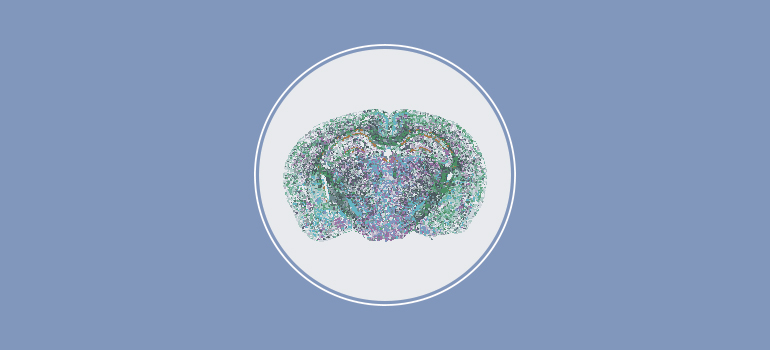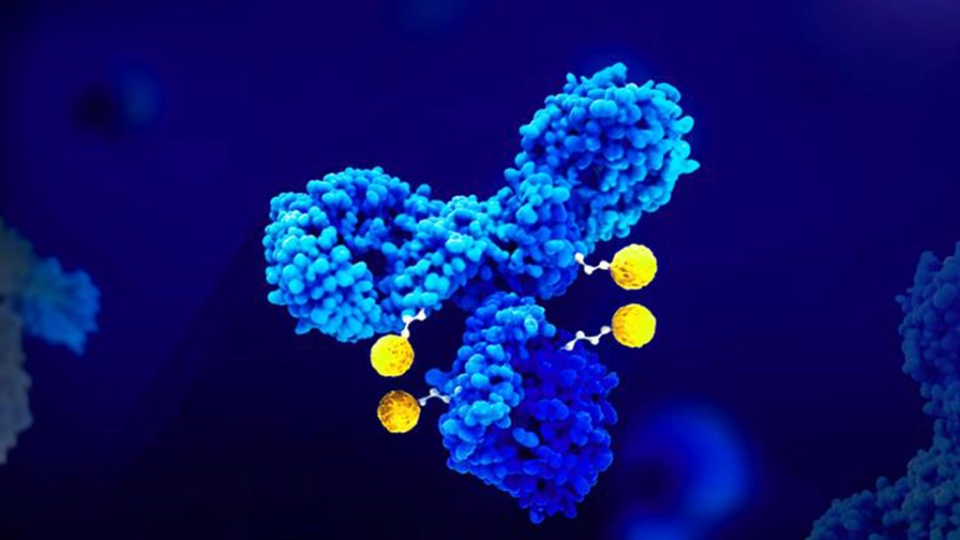Spatial omics add a dimension to understanding cellular interactions, their organization, gene expression, pathogenicity, and therapeutic responses by combining different analyses through genomics, proteomics, epigenomics, transcriptomics, lipidomic, and metabolomics. The spatial positioning of cells and molecules plays a vital role in tissue physiological function and understanding disease pathology. Spatial omics enable the collection of information regarding cellular structure, molecules, and microenvironment in the tissue.

Single Cell Spatial Omics
When the analysis techniques are applied to understand the micro-environment inside a cell, to understand the gene activity, then it is known as single-cell spatial omics.
Every Cell Matters!
As every cell matters, the importance of studying single cells by Single-cell genomics and multi-omics approaches, such as single-cell and single nucleus RNA-Seq and CITE-Seq, have been taken up, studying the cell in its native environment can highlight cancer propagation and resistance to therapy. Spatial omics can be utilised to study cancer samples across different species and in distinct organs. Integration of spatial omics with other omics techniques can decode the microenvironment of the tumour structure. Single-cell omics is a powerful automated technique to understand gene activity through RNA expression at the single-cell level depending on its position and tissue environment. The cell’s genotype, along with epigenomics, determines its potential state, whereas the cell’s proteins and metabolites are indicators of its current state.
Databases for data interpretation
Though spatial omics is a powerful tool, but the data generated through the process is very large and complex to interpret, this is also one of the biggest challenges faced in using spatial omics biotechnology. There are certain computational tools to interpret these data sets, there are tools for data processing, spatial gene selection, clustering, and spatial intercellular crosstalk. A few recent methods used for the purpose are:

Prominent Players in Spatial Omics Market
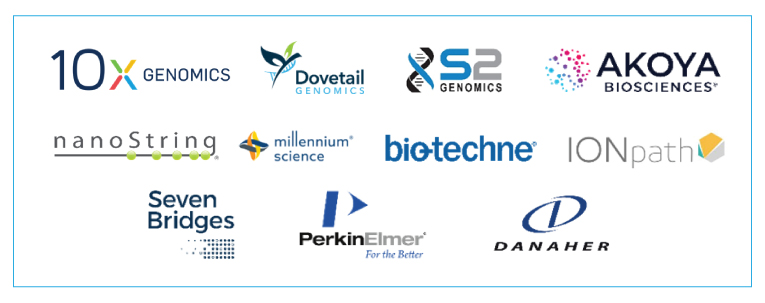
Spatial Omics in Battle against Cancer
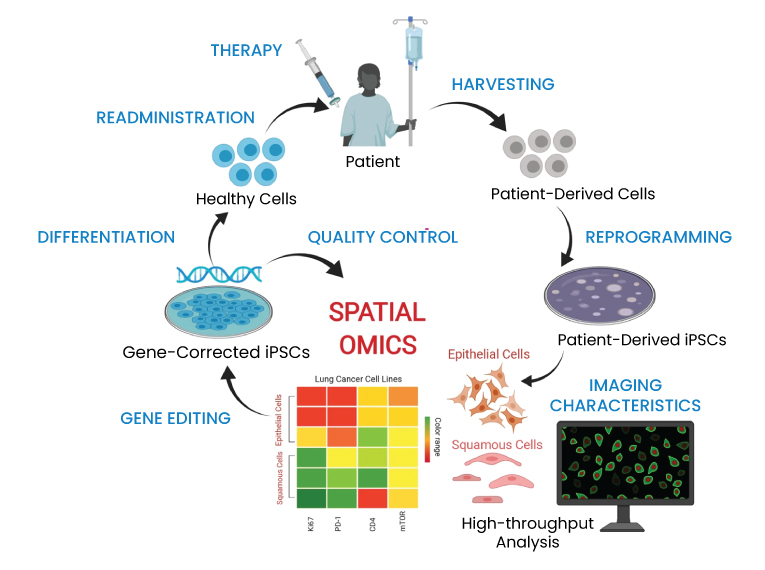
Understanding the complexity of cancer and no-cancer cell interaction can improve the understanding of cancer biology
Spatial multiomics have been useful in revealing novel biomarkers, and molecular regulators responsible for certain types of tumour growth.
Capturing the native architecture of a tumour cell is essential for the diagnosis and development of novel therapies.
Techniques to Capture Micro-Environment Inside a Cell
- Laser capture microdissection-based approaches
- Image-based in situ transcriptomics
- Spatial proteomics
- Spatial barcoding-based transcriptomics
- Spatial metabolomics
- Spatial multi-omics technologies
Limitations and Barriers
The biggest hurdle for omics datasets is big datasets interpretation. Understanding and curation of complex multi-layered networks is challenging, computationally and time intensive, it requires detailed biological system knowledge, as without biological knowledge of the system, one frequently ends with the nomination of key molecules and networks for hypothesis testing that are biologically irrelevant. So, validation of key molecules, and inclusion of validation cohorts and networks (e.g., genes, proteins or metabolites) is time-consuming and often challenging. Currently, there is a lack of a single approach for processing, analysing and interpreting all data from different -omes. High throughput, user friendly and effective frameworks need time for this field to advance
Spatial Omics Market Segmentation
According to Global Spatial Genomics Market Research report the market is segmented based on technology, end-users, applications, and products.
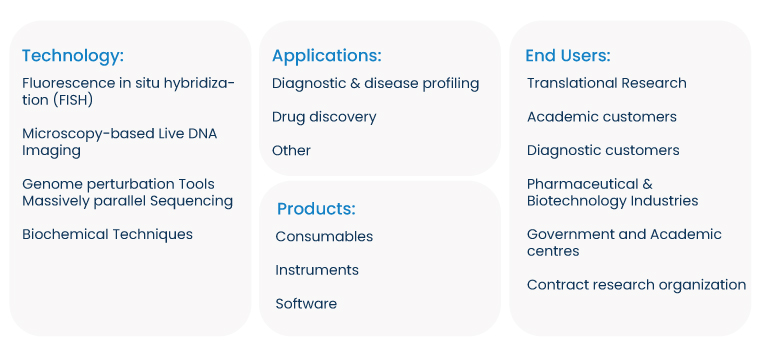
Future Scope of Spatial Omics
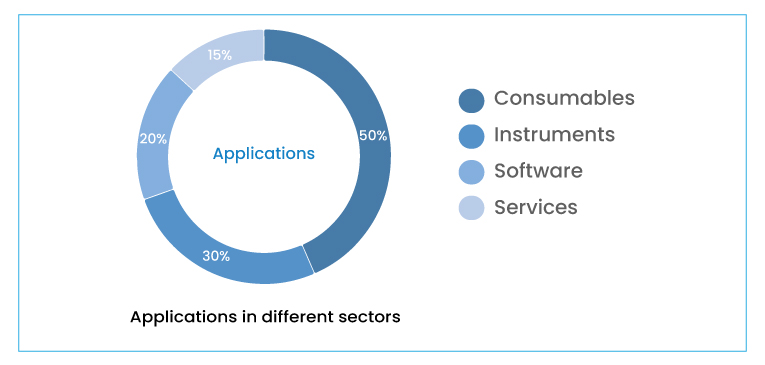
Multi-omics approaches can guide the generation of novel regenerative therapeutics, as the approach can improve our understanding of complex mechanisms governing tissue restoration.
The observations made through spatial optics can provide potential innovative solutions for designing precision medicine strategies.
The technique enables the researchers not only to know about the internal cell environment but also about their organisational relationship with each other. It is an efficient integrated technology that has an increasing application, especially in the field of molecular genetics.
The segment is expected to see exponential growth due to increasing cases of cancer and infectious diseases around the globe. Owing to this, R&D particularly in the field of genomics is expected to rise. Application of spatial omics in the fields of pharmaceuticals, biotechnology, academic institutes, and transitional research institutes will prove to be a boon for the growth of the Omics market.
How Can IeB Help You?
- Ingenious e-Brain is a global provider of research services to the IP team, R&D team, and decision-makers from various verticals marketing, business development, etc.
- IeB can give detailed technology and IP snapshots in Spatial omics.
- We can help companies know about developments, key players’ strategic movements, recent advancements, potential targets for acquisition or partnership, white spaces in the domain, players holding strong IP portfolios, and other details.
- In addition, to this, we can also help in competitive intelligence, product benchmarking, and many more.

